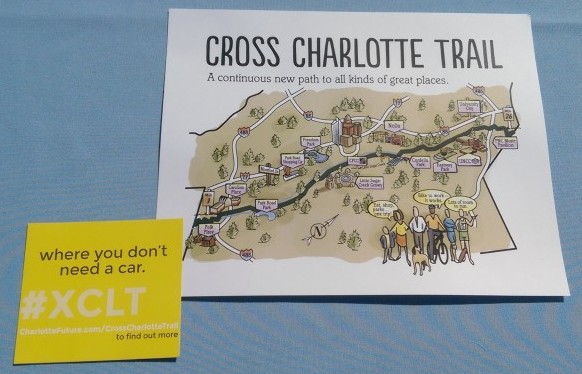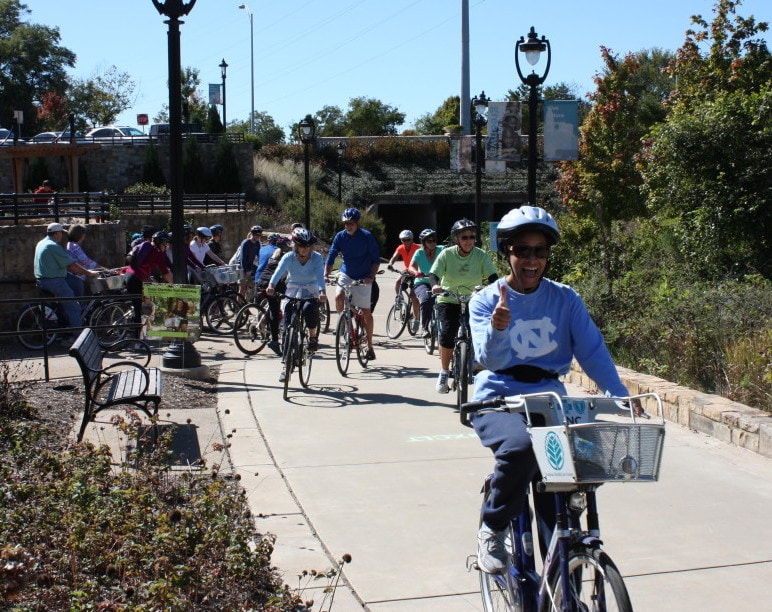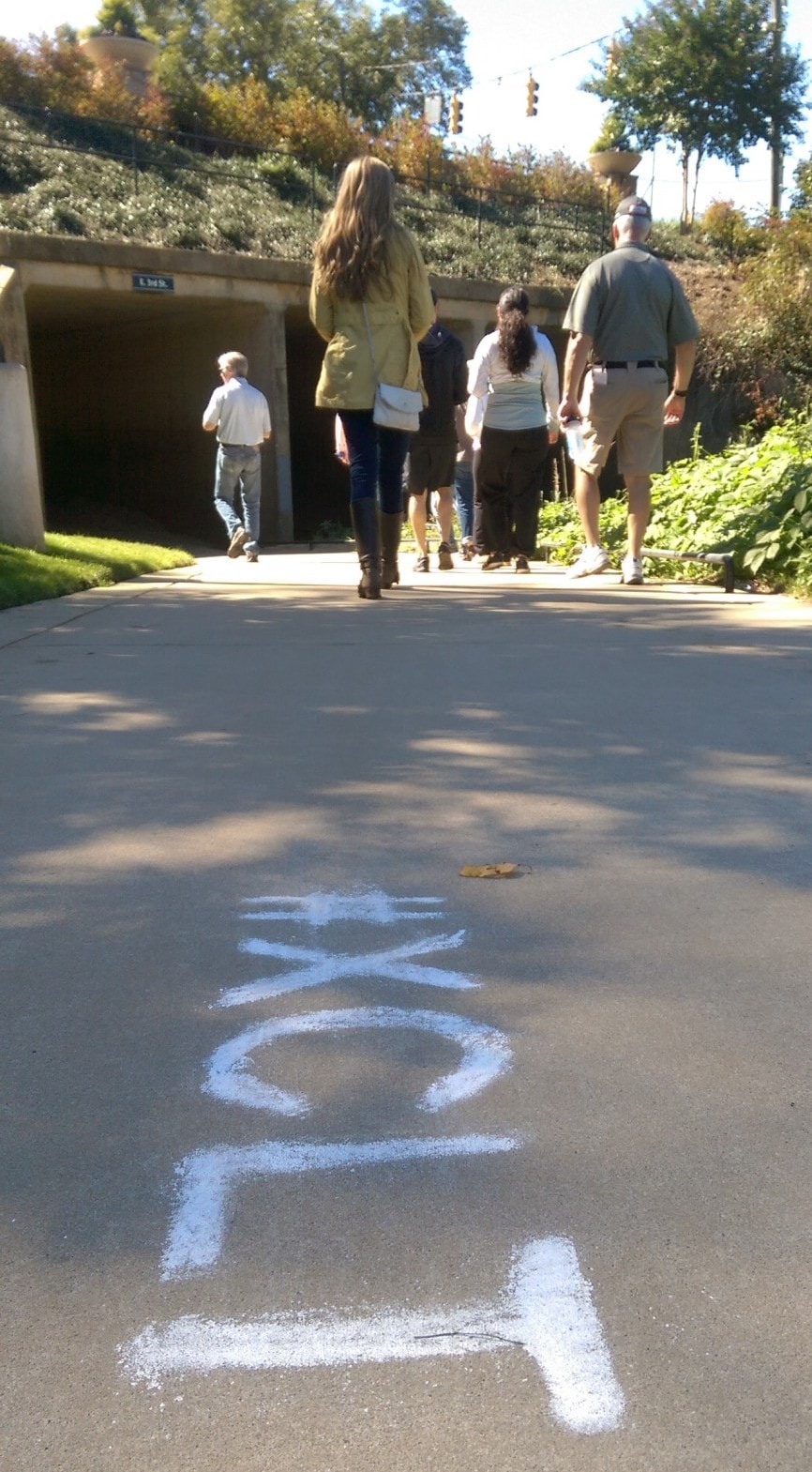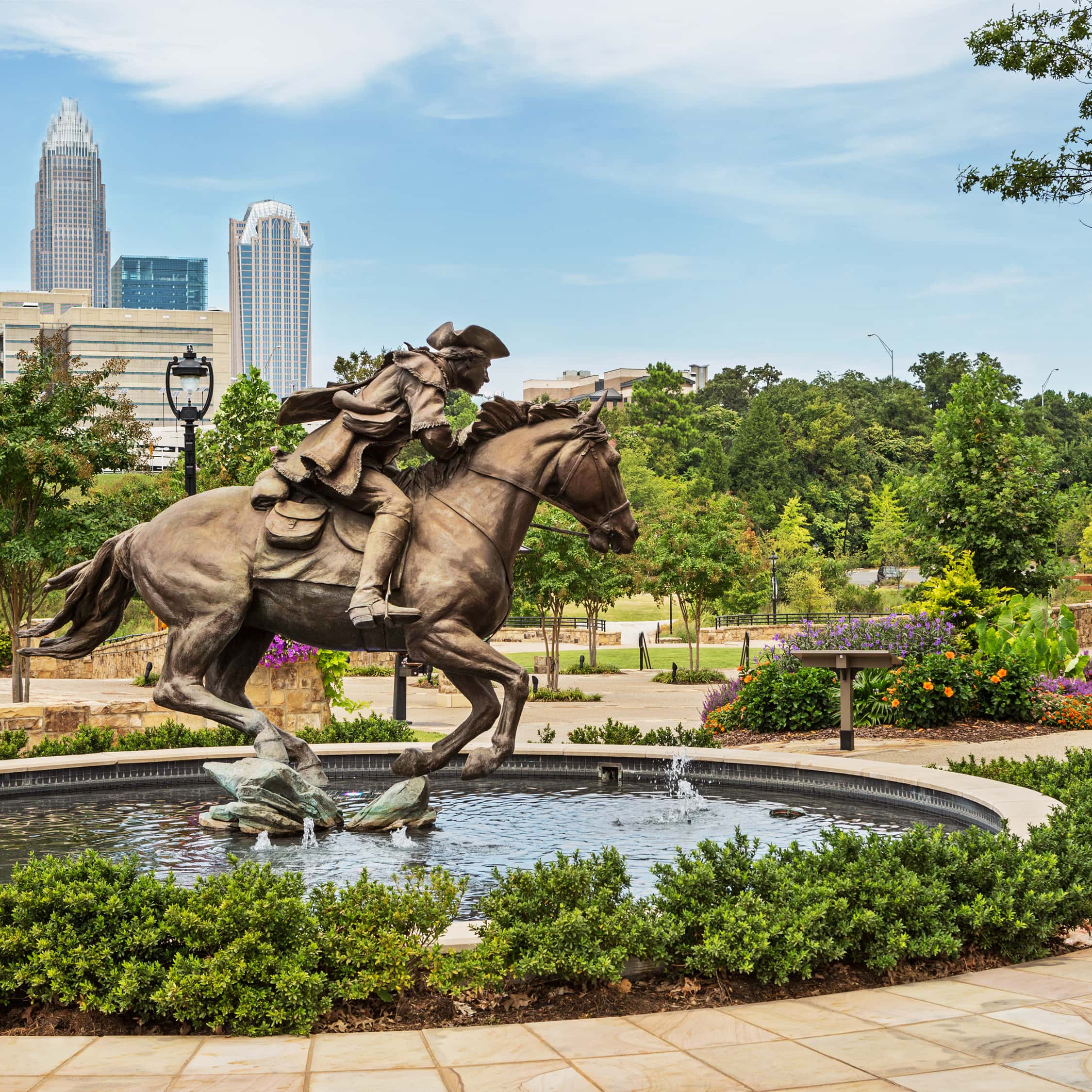 Alternative transportation in this town is on everyone’s radar. Gone are the days when funds were only allocated to the highway and road system, while insignificant funds went towards other viable options. Light rail transit, bike lanes and greenways have become the new mode of transportation to navigate around Charlotte. Main Characters: Staff from City of Charlotte, Mecklenburg County, LandDesign, Toole Design, Kimley Horn, STV Group. Plot: It certainly hasn’t been an easy road to get to our multi-modal network. This effort takes patience and perseverance, planners and politicians to come together to decide how our city will grow sustainably and offer better quality of life for its citizens. Climax: Hard work pays off. The City of Charlotte is partnering with the County to create the 26-mile trail and greenway facility that will stretch from the Town of Pineville, through Center City and on to the UNC Charlotte campus and Cabarrus County line. Conclusion: Progress is made when people work together to make visions happen. You’ve read the preview, now let’s get on to the actual show.
Alternative transportation in this town is on everyone’s radar. Gone are the days when funds were only allocated to the highway and road system, while insignificant funds went towards other viable options. Light rail transit, bike lanes and greenways have become the new mode of transportation to navigate around Charlotte. Main Characters: Staff from City of Charlotte, Mecklenburg County, LandDesign, Toole Design, Kimley Horn, STV Group. Plot: It certainly hasn’t been an easy road to get to our multi-modal network. This effort takes patience and perseverance, planners and politicians to come together to decide how our city will grow sustainably and offer better quality of life for its citizens. Climax: Hard work pays off. The City of Charlotte is partnering with the County to create the 26-mile trail and greenway facility that will stretch from the Town of Pineville, through Center City and on to the UNC Charlotte campus and Cabarrus County line. Conclusion: Progress is made when people work together to make visions happen. You’ve read the preview, now let’s get on to the actual show.
 Today wasn’t just another Saturday in October. It was a pivotal moment in this long-standing history of alternative transportation; today unveiled the Cross Charlotte Trail (XCLT)’s Master Plan to the public. Three tents were set up: one main tent showing both segments of the trail at Elizabeth Park for public interaction and comments on the alignment, cross sections and other displays set up to educate the public; one tent at Cordelia Park visited by riders on the north bike tour, which displayed the Uptown to UNCC segment of the trail; and one tent close to Park Road Shopping Center, visited by riders on the south bike tour, which displayed the Brandywine to Tyvola segment of the trail. With the most optimal fall weather conditions, Charlotteans had the opportunity to take a walk or bike tour on Little Sugar Creek Greenway (LSCG) with City staff members and Beth Poovey, who represented LandDesign’s valuable consulting role on the project.
Today wasn’t just another Saturday in October. It was a pivotal moment in this long-standing history of alternative transportation; today unveiled the Cross Charlotte Trail (XCLT)’s Master Plan to the public. Three tents were set up: one main tent showing both segments of the trail at Elizabeth Park for public interaction and comments on the alignment, cross sections and other displays set up to educate the public; one tent at Cordelia Park visited by riders on the north bike tour, which displayed the Uptown to UNCC segment of the trail; and one tent close to Park Road Shopping Center, visited by riders on the south bike tour, which displayed the Brandywine to Tyvola segment of the trail. With the most optimal fall weather conditions, Charlotteans had the opportunity to take a walk or bike tour on Little Sugar Creek Greenway (LSCG) with City staff members and Beth Poovey, who represented LandDesign’s valuable consulting role on the project.
While on the tour, participants learned about the continuity that will occur between LSCG and XCLT; how art pieces, such as the bronze statues, help tell Charlotte’s history along the trail; how lighting, although not initially prioritized in a greenway’s budget, plays an important role to the safety of the trail and how XCLT will accommodate this amenity; and how there is a desire and need for separate zones, especially in high traffic areas, to accommodate cyclists and pedestrians comfortably.
The north tour highlighted the challenges associated of working with existing highways and infrastructure, the importance of trail safety and perceived safety (people need to be safe but also feel safe), and how the trail should spur economic development and housing opportunities outside of the existing neighborhoods. Connectivity between Optimist Park and Toby Creek Greenway, close to UNCC, was mentioned having a few potential routes.
Participants on the south tour were able to witness how blurred edges between public and private realms exist, like at The Metropolitan, and how this is extremely successful to the trail’s livelihood; programmed areas adjacent to the trail, such as retail and restaurants, attract many people and provide an incentive to stop, shop and linger. Using this experience as a precedent, it is the hope of XCLT to create great placemaking opportunities, allowing users to meander between the two realms freely.
 Although continuity will exist between LSCG and XCLT, participants learned about the contrasts as well. In addition to bike and pedestrian separated zones, XCLT will be wider than LSCG in some areas to accommodate more users. When the trail is adjacent to a roadway, a vertical buffer will separate the cyclist from the automobile for added safety. Key nodes, such as fountains and kiosks, along LSCG are located in the center of the greenway to slow traffic down; on XCLT, these features will most likely be constructed off to the side so as not to disrupt the traffic pattern.
Although continuity will exist between LSCG and XCLT, participants learned about the contrasts as well. In addition to bike and pedestrian separated zones, XCLT will be wider than LSCG in some areas to accommodate more users. When the trail is adjacent to a roadway, a vertical buffer will separate the cyclist from the automobile for added safety. Key nodes, such as fountains and kiosks, along LSCG are located in the center of the greenway to slow traffic down; on XCLT, these features will most likely be constructed off to the side so as not to disrupt the traffic pattern.
The unveiling was received enthusiastically by participants. The general consensus was participants were really engaged, interested and wanted to learn more. Several participants asked what they could do to help speed up the process, what did they need to vote on, etc. City and County staff, alongside LandDesigners who worked the event, were thrilled with the feedback and support. Looks to me like the XCLT Master Plan unveiling was a huge hit at the box office. But don’t throw away your popcorn just yet, stay tuned for previews of the grand finale by following #XCLT on Twitter.

